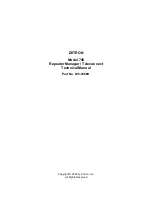
11
DIPA - Dynamic Induction Power Adjust
Automatic optimum setting of required power for achieving max. efficiency, speed and long-term heating in
dependence on other heating parameters.
ACMS-Automatic Check And Monitor System
Combines features that check and verify device functionality and condition after activation, and a feature that
constantly supervises and monitors the heating running and parameters for maximum device safety and
reliability.
DFU-Device Firmware Update
Enables updating the firmware.
8.2
HEATING MODES AND THEIR APPLICATION
The heater has available two different heating modes :
1. Field of burner (CF) power mode
In this mode, the induction heater maintains the same intensity of the magnetic field regardless of the coil
surrounding conditions. The heater behaves similarly to a gas burner, where the set field intensity matches
the flame power. The amount of introduced heat is then easily controlled by moving the burner nearer or
further from the material, similarly to flame heating. The advantage is that it is easier to control the introduced
heat as needed and, most importantly, it allows finer and sensitive heating, e.g., in car repairs (warming
window edges when removing windows, bodywork plates for easier removal of stickers, rubber parts, etc.).
Advantages:
- Power control by moving nearer or further .
- Fine heating.
2. Control power mode (CP)
In this mode, the device tries to deliver and maintain the set amount of introduced heat or energy to the
material. The advantage is thus the controlled amount of heat introduced to the material, which combined
with timing enables relatively accurate heating to a set temperature, e.g., for repeated pre-heating in
production, etc.
The disadvantage of this mode that when moved further from the material, the device significantly increases
the power output to maintain the heat delivery level to the material, thus increasing the loss and resulting in
a faster device overheating. The efficiency is reduced as well.
Advantages:
- The device automatically maintains the set amount of heat introduced to the material, thus heating
the material accurately.
Drawback:
- The disadvantage is the great increase in the induction output when moved away from the material
or with inappropriately chosen coil, resulting in high heating load and quick temperature increase,
reducing in turn the load factor and rapidly overheating the device.
- The efficiency is reduced.









































